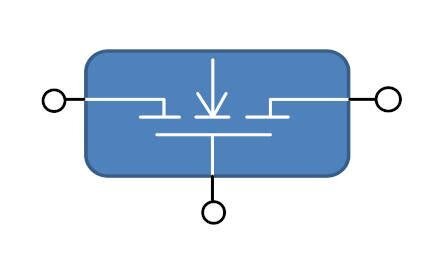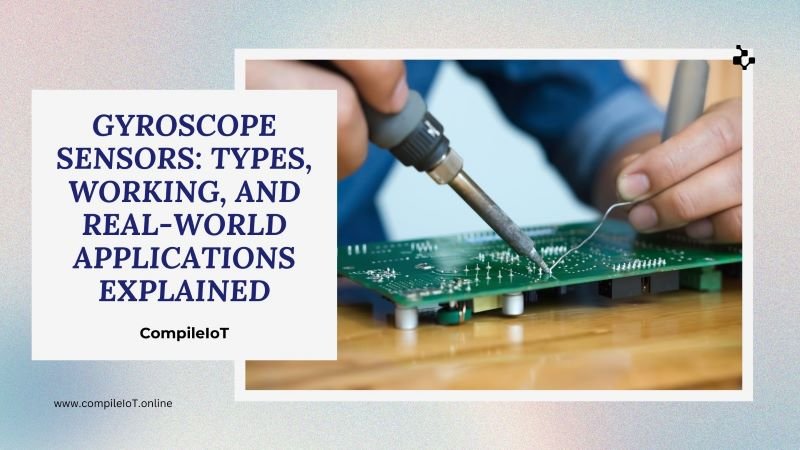Bidirectional Switch: Everything You Need to Know
Have you ever wondered how electrical circuits work? One essential component that plays an imp role in circuitry is the bidirectional switch. In this article, we will delve into the world of bidirectional switches, exploring their functionality, applications and benefits.
What is a Bidirectional Switch?
A bidirectional switch, also known as a double-pole, double-throw (DPDT) switch, is an electrical device that can control the flow of current between two different circuits. Unlike a unidirectional switch, which can only allow current to flow in one direction, a bidirectional switch can change the direction of current flow.
Typically, a bidirectional switch consists of two separate switches that are mechanically linked together. This allows the switch to simultaneously open or close two separate circuits. By toggling the switch, you can change the connection between the circuits, enabling current to flow in one direction or the other.
Key Features of Bidirectional Switches
Bidirectional switches come with several key features that make them versatile and useful in different applications. Here are some of the main features:
- Dual-Directional Current Flow: The primary feature of a bidirectional switch is its ability to allow current flow in both directions. This means that it can handle both positive and negative currents, making it suitable for applications where the direction of current needs to be changed or controlled.
- Low On-Resistance: Another important feature of bidirectional switches is their low on-resistance. This means that when the switch is turned on, it has minimal resistance to the flow of current. This low on-resistance ensures efficient power transfer and reduces power losses in the system.
- Fast Switching Speed: Bidirectional switches are designed to have fast switching speeds, allowing them to quickly change their state from on to off or vice versa. This fast switching speed is crucial in applications where rapid switching is required, such as in high-frequency circuits or motor control.
- Protection Features: Many bidirectional switches also come with built-in protection features to ensure safe and reliable operation. These protection features may include overcurrent protection, overvoltage protection, and thermal shutdown. These safeguards help prevent damage to the switch and the connected circuitry.
How Does a Bidirectional Switch Work?
A bidirectional switch consists of a control circuit and a switching element. The control circuit is responsible for controlling the state of the switch, while the switching element allows or blocks the flow of current based on the control signal.
When the control circuit sends a signal to turn on the switch, the switching element allows current to flow in one direction. Conversely, when the control circuit sends a signal to turn off the switch, the switching element blocks the current flow in both directions.

The switching element in a bidirectional switch can be implemented using various technologies, such as MOSFETs (Metal-Oxide-Semiconductor Field-Effect Transistors), IGBTs (Insulated Gate Bipolar Transistors), or thyristors. These switching elements are chosen based on the specific requirements of the application, such as voltage and current ratings.
Overall, the control circuit and switching element work together to control the direction of current flow in a bidirectional switch. By toggling the switch on or off, the control circuit determines whether current can flow in one direction, the other direction, or in both directions.
Types of Bidirectional Switches
There are two main types of bidirectional switches: mechanical bidirectional switches and solid-state bidirectional switches.
Mechanical Bidirectional Switches
Mechanical bidirectional switches are switches that physically move to connect or disconnect the circuit. They are often used in applications where a physical connection is required to switch between two different states.
Example of a mechanical bidirectional switch is a toggle switch. This type of switch has a lever or handle that can be moved up or down to connect or disconnect the circuit. When the lever is in one position, the circuit is closed, allowing current to flow. When the lever is in the other position, the circuit is open, preventing current from flowing.
Mechanical bidirectional switches are often used in electrical systems where a physical connection is necessary, such as in household light switches or power tools.
Solid-State Bidirectional Switches
Solid-state bidirectional switches, on the other hand, do not have any moving parts. Instead, they use electronic components to control the flow of current. These switches are typically more reliable and durable than mechanical switches, as they do not wear out over time. Example of a solid-state bidirectional switch is a transistor.
Transistors are semiconductor devices that can act as switches, allowing or preventing the flow of current depending on the input signal. They are widely used in electronic circuits and can be found in a variety of applications, from computers to telecommunications equipment.
Solid-state bidirectional switches offer several advantages over mechanical switches. They can switch faster, have a longer lifespan, and can be more compact in size. They are also less prone to wear and tear, making them suitable for applications where reliability is crucial.
Applications of Bidirectional Switches
Bidirectional switches have a wide range of applications in various industries. Here are a few examples:
1. Power Distribution Systems: Bidirectional switches are commonly used in power distribution systems to control the flow of electricity. They can be used to switch between different power sources, such as generators or renewable energy sources, depending on the demand and availability of power.
2. Motor Control: In motor control applications, bidirectional switches are used to control the direction of rotation of electric motors. By switching the polarity of the current, the motor can be made to rotate in either direction.
3. Battery Management Systems: Bidirectional switches are also used in battery management systems to control the charging and discharging of batteries. They can be used to switch between charging and discharging modes, as well as to protect the battery from overcharging or overdischarging.
4. Industrial Automation: In industrial automation, bidirectional switches are used to control various processes and equipment. They can be used to switch between different sensors or actuators, allowing for precise control and monitoring of the industrial processes.
5. Renewable Energy Systems: In renewable energy systems, bidirectional switches are used to connect or disconnect energy sources, such as solar panels or wind turbines, to the electrical grid. They can also be used to switch between different energy storage systems, such as batteries or capacitors.
Advantages of Bidirectional Switches
Here are some of the key advantages of using bidirectional switches:
- Versatility: Bidirectional switches are highly versatile and can be used in a wide range of applications. They are commonly used in power electronics, telecommunications, automotive systems, and industrial automation. Their ability to control current flow in both directions makes them suitable for bidirectional power flow systems.
- Efficient Power Management: Bidirectional switches play a crucial role in power management systems. They allow for bidirectional power flow, which is essential in applications such as energy storage systems, electric vehicles, and renewable energy systems. By efficiently managing power flow, bidirectional switches help optimize energy usage and improve overall system efficiency.
- Enhanced Control: Bidirectional switches offer precise control over the flow of current or signals. They can be used to switch between different power sources, control the direction of motor rotation, or enable bidirectional communication in data transmission systems. This level of control is crucial in many applications where precise and reliable switching is required.
- Cost Savings: Bidirectional switches can help reduce costs in certain applications. For example, in power electronics, bidirectional switches can eliminate the need for separate unidirectional switches, reducing component count and overall system complexity. This can result in cost savings in terms of manufacturing, maintenance, and system integration.
Disadvantages of Bidirectional Switches
While bidirectional switches offer many advantages, there are also some disadvantages to consider. It’s important to be aware of these limitations before implementing bidirectional switches in your application:
- Complexity: Bidirectional switches can be more complex than their unidirectional counterparts. They require additional circuitry and control mechanisms to manage the bidirectional flow of current or signals. This complexity can increase the design and implementation challenges, as well as the cost of the overall system.
- Power Loss: Bidirectional switches can introduce power losses due to their inherent design. When current flows in the opposite direction, there may be additional resistance or voltage drops, leading to power dissipation. This can reduce the overall efficiency of the system and may require additional measures to mitigate the power loss.
- Control Challenges: Bidirectional switches require careful control and coordination to ensure proper operation. Switching between different power sources or controlling bidirectional communication requires precise timing and synchronization. Failure to achieve this can result in system instability, reduced performance, or even damage to the components.
Considerations When Using Bidirectional Switches
When using bidirectional switches in your application, there are several important considerations to keep in mind:
1. Voltage and Current Ratings: Ensure that the bidirectional switch you choose can handle the voltage and current levels required by your application. Exceeding these ratings can lead to device failure or safety hazards.
2. Switching Speed: Consider the required switching speed for your application. Some bidirectional switches may have limitations on their switching frequency, which can impact the overall performance of your system.
3. Protection Mechanisms: Implement appropriate protection mechanisms to safeguard the bidirectional switch and other components in your system. This may include overcurrent protection, overvoltage protection, and temperature monitoring to prevent damage or failure.
4. Heat Dissipation: Bidirectional switches can generate heat during operation. Ensure proper heat dissipation mechanisms are in place to prevent overheating and ensure reliable operation.
Future Trends in Bidirectional Switches
As technology continues to advance, bidirectional switches are expected to evolve and offer even more advanced features and capabilities. Here are some future trends to watch for in bidirectional switches:
- Higher Power Handling: Future bidirectional switches are likely to have higher power handling capabilities, allowing for use in larger-scale applications such as electric grid systems and high-power industrial equipment.
- Improved Efficiency: Efforts are being made to reduce power losses in bidirectional switches, leading to improved overall system efficiency. This can result in energy savings and reduced environmental impact.
- Miniaturization: Bidirectional switches are expected to become smaller and more compact, enabling their integration into smaller devices and systems. This trend aligns with the increasing demand for miniaturization in various industries.
- Enhanced Control and Monitoring: Future bidirectional switches may incorporate advanced control and monitoring features, such as built-in diagnostics, fault detection, and real-time feedback. These advancements will enable better system performance and reliability.
Conclusion
In conclusion, Bidirectional switches are an essential component in electrical circuitry, offering versatility, space efficiency, cost savings, and simplified circuitry. Whether you are working with motor control systems, audio equipment, power supply selection, or data communication networks, bidirectional switches provide the functionality you need to control the flow of current in both directions. Understanding the applications and benefits of bidirectional switches can help you make informed decisions when designing and implementing electrical circuits.







